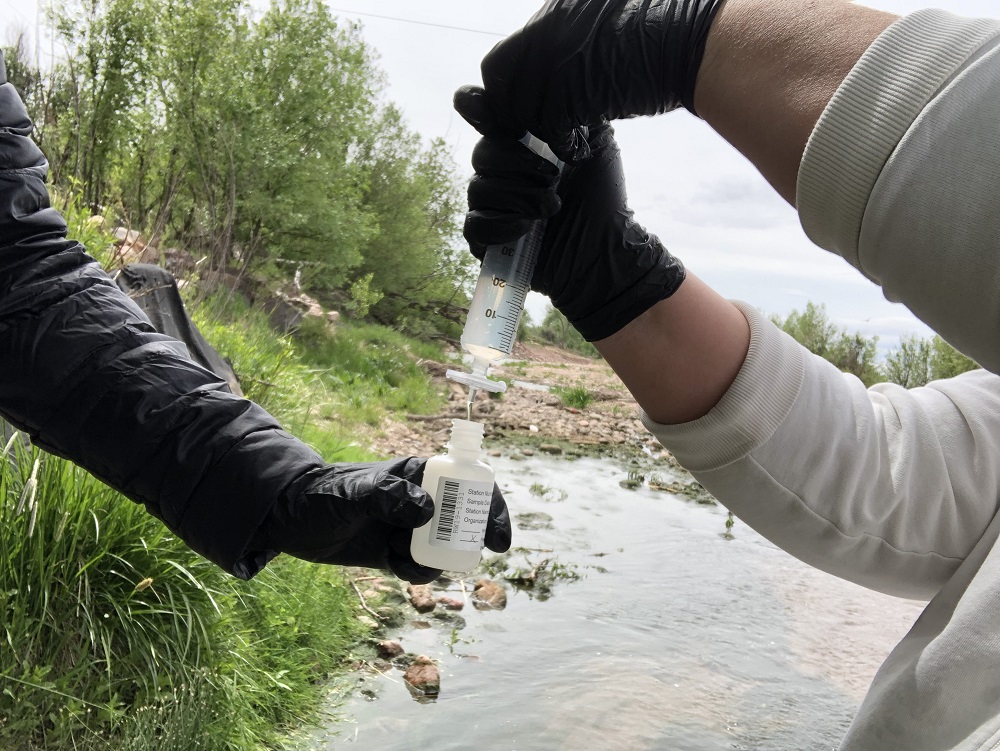Headquartered in Washington, DC, Clean Water Action and Clean Water Fund operate programs nationally, regionally and locally, from a network of 19 offices around the country. We have members and supporters in all 50 states. To learn more about state and regional programs visit this page.
Download the full Annual Report here.
2020 accomplishments set the stage for continued progress protecting our water and our health
Despite the past year’s very challenging circumstances — a hostile anti-environment administration and the coronavirus pandemic’s devastating health toll, social and economic disruptions — 2020 proved to be surprisingly productive, in each of Clean Water Action’s priority program areas:
Water
We continued to help communities organize for policies and actions that protect water from pollution and contamination and to advance our vision of clean water for all people and communities. We made continued progress on positive, proactive water solutions at the local, state and federal levels. This includes promising “green infrastructure” solutions to reduce runoff pollution, to get lead out of contact with people’s drinking water (supporting $45 billion in new federal investments toward that end), and to protect drinking water sources. With the Clean Water Act’s 50th anniversary and Clean Water Action’s own 50th birthday coming up in 2022, it remains clear that — even with continued progress — much remains to be done.
Climate
Clean Water Action recognizes the urgent need for bolder action on climate, and is working with states, communities and businesses to tackle the climate crisis, transition to renewable energy, and reduce pollution from cars and trucks. People who face daily exposure to oil and gas industry pollution must be protected, along with their air and water. Communities on the receiving end of too much pollution from multiple sources and industries need relief, following the example set by New Jersey’s innovative “cumulative impacts” legislation, which places their needs first in future siting and permitting decisions.
Waste & Toxics
Clean Water Action is leading the charge for state policies and federal action to get toxic PFAS “forever chemicals” out of our drinking water sources, eliminate their use in food packaging and fire-fighting foam (following California’s landmark win), and to prevent and clean up future PFAS pollution of our water (our progress in Colorado). We are also pursuing similar strategies for toxic flame retardant chemicals (following a hard-fought victory in Massachusetts). Our Re-Think Disposable program continues to support and strengthen networks of businesses and consumers who reject single-use plastics, while also promoting policies, such as those we helped win in New Jersey, California and other states to phase out wasteful throwaway bags and foamware.
Democracy
Building support for voting reforms and a democracy that works for all is a priority across all Clean Water Action programs. This includes campaigning in support of the transformational For the People Act and the John Lewis Voting Rights Advancement Act. Curbing polluters’ corrosive political and lobbying influence and making it easier for more people to register and vote safely and securely are both essential for realizing our long-term water and health protection goals, including fishable, swimmable, drinkable water for all.
Clean Water Action & Clean Water Fund’s 2020 accomplishments set the stage for 2021 priorities, including:
- Access to clean water for all — not yet a reality for too many people in the U.S., and central to our mission and vision for the future.
- Strengthening efforts to stop pollution before it can start, integrating Clean Water Act and Safe Drinking Water Act tools to get the job done.
- Helping communities across the U.S. do more, faster to get lead out of contact with our drinking water.
- Tackling the problems of disproportionate impact and environmental injustice by which low-income communities, and communities of color in particular, are also forced to bear the brunt of pollution in their air, land, water and workplaces. This annual report calls out our evolving partnerships with environmental justice communities and leaders, but these issues are woven throughout all of our programs.
- Continuing to work with businesses and consumers to stem the tide of single-use disposables, especially plastic trash, too much of which ends up in our water.
- Repealing the previous administration’s disastrous “Dirty Water Rule” without delay, and replacing it to make sure all streams, wetlands — including drinking water sources for millions — are protected under the Clean Water Act.
- Protection against residential water shut-offs, water bill assistance for low-income households, and support for struggling water systems.
- Making sure new federal spending will address long-neglected water infrastructure needs and benefit communities most at risk.
- Advancing climate solutions that create jobs and protect clean water.
Download the full Annual Report here.

